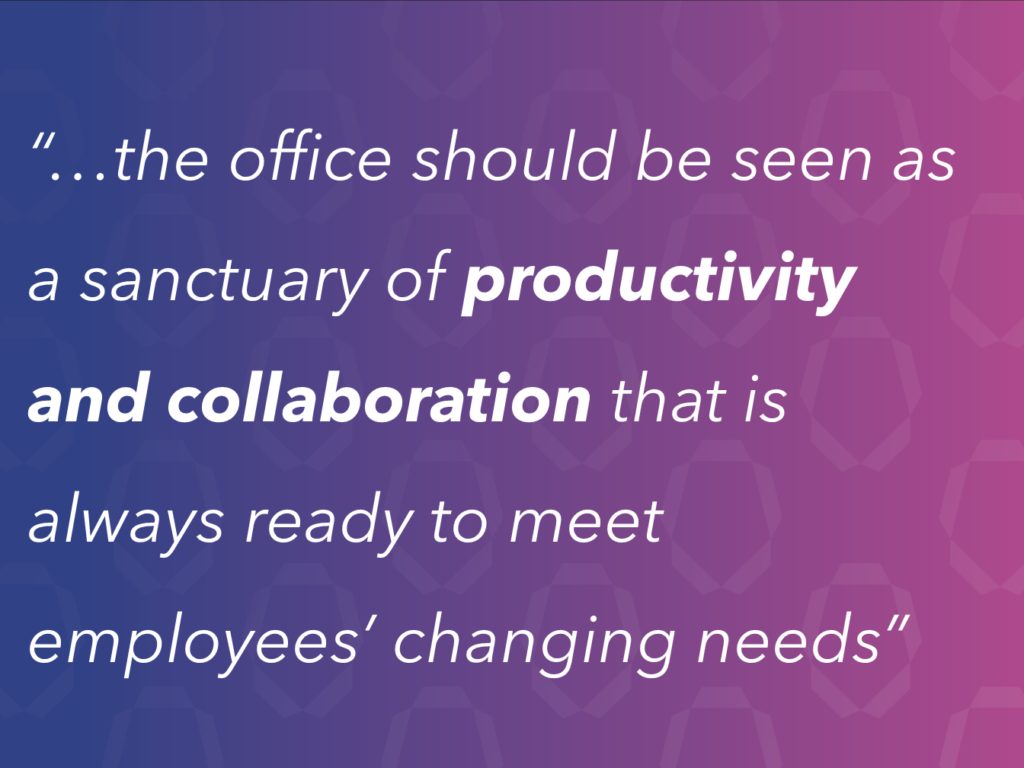Hybrid Work and Behavioral Data
It’s been over two years since many of us have pursued a hybrid workplace model, and many employees have become accustomed to this way of working. According to a 2022 Global Benefits Attitudes survey from WTW, a majority of employees prefer remote or hybrid work, and 70% of respondents noted hybrid work has helped them achieve a better work-life balance.
While hybrid work is here to stay for the foreseeable future, I firmly believe that when employees do come into the office, the office should be seen as a sanctuary of productivity and collaboration that is always ready to meet employees’ changing needs. To do that, business leaders have an opportunity to utilize behavioral data to identify the right purpose for their spaces and ensure that they are providing value to employees in a way that simply cannot be replicated when working remotely.

Don’t Just Try to Fit People Into Spaces
Next to office labour costs, office real estate spend has been the second largest expenditure for most organizations. A recent McKinsey article reported that “Fortune 50 companies alone occupy 2.6 billion sq. ft. of real estate”. A good chunk of that real estate sat mostly empty for long stretches during the pandemic, and continues to do so.
Historically, the standard workplace management model has been based on fitting people into spaces: assigning an employee to a desk, chair, and equipment in an office or cubicle. When the hybrid workplace was implemented at the beginning of the pandemic, organizations equipped their employees with the technology needed to do their jobs at home, and the research now shows that most employees found that the resources provided by their employers met their needs.
As a result, Advanced Workplace Associates, a management consultancy, found that 86% of surveyed employees want to work from home at least two days a week. And an ADP report revealed 64% of workers would consider quitting if forced to return full-time.
While the hybrid workplace does have its benefits, there is – and always has been – benefits from in-person collaboration. For employers, defining the purpose of a physical office to meet employee needs is what can reconnect them to their workplaces and colleagues.
Utilizing Human Behavioral Data to Create Spaces that Have a Clear Purpose
Purpose in workplace strategy and design means providing each employee with resources, collaboration opportunities, and the ability to connect with others. The key is to focus on human-centric patterns of behavior, space use, and flexibility in function and inspiration for a hybrid workforce. Critical to achieving this goal is understanding the distinction between occupancy and utilization in a space so that strategic investments decisions in workplace design can be made based on how employees are actually interacting within the office.
Building purposeful workplaces starts with understanding four factors that influence employees’ perceptions:
- Social conformity – What do people think their environment is telling them to say, do, and want? Employees often alter their behavior because they’re aware of being observed.
- Wishful thinking – People believe what they’d like to be true about their workplace and the jobs they do within it.
- Context – People respond differently in different contexts. No two people see and feel their workplace in the same way.
- Mindset systems – Daniel Kahneman describes in his book, Thinking, Fast and Slow, two systems that impact employee mindsets. “System one” is fast, instinctive, and driven by emotion. “System two” is the opposite: slower, more deliberate, more rational. When predicting what they’ll do in a particular situation, employees use system one. When they make a decision, system two instinctively kicks in.
By aggregating behavioral insights, facilities managers can create spaces that employees actually want to work in – all while ensuring utilization is aligned with business needs. These behavioral stats can then be combined with occupancy and utilization information from other sources – such as sensors and badge swipes. Accessing key information and data points in this manner allows employers to view near real-time insights as opposed to just snapshots with little or no context surrounding them.
By focusing first on purpose – then maximizing data from all workplace sources – business leaders can evolve their spaces to address immediate employee needs, while also maintaining flexibility to adapt to new work requirements, unforeseeable crises, and potential growth.

